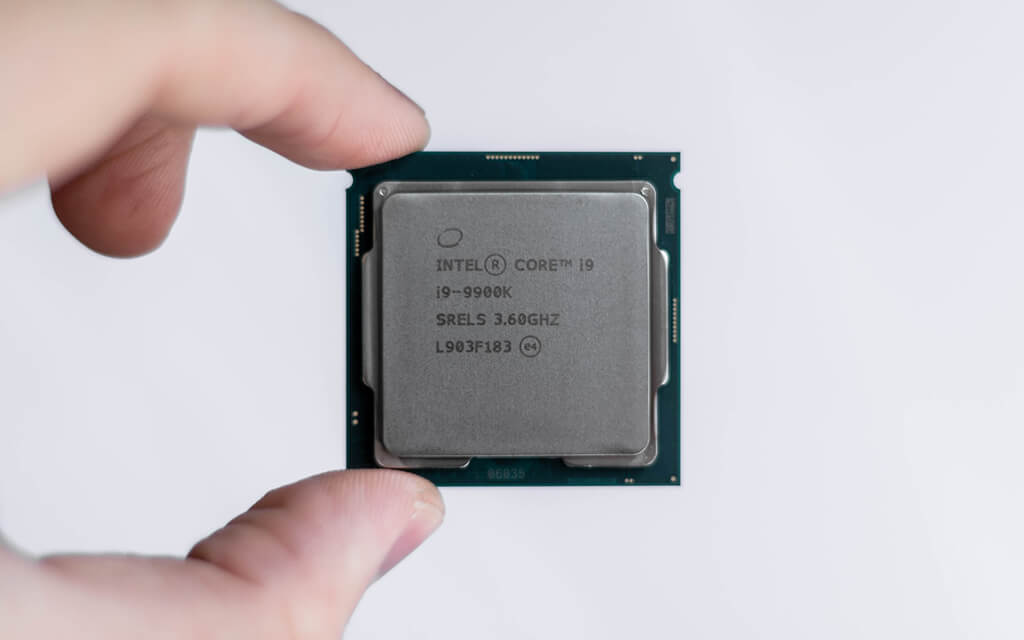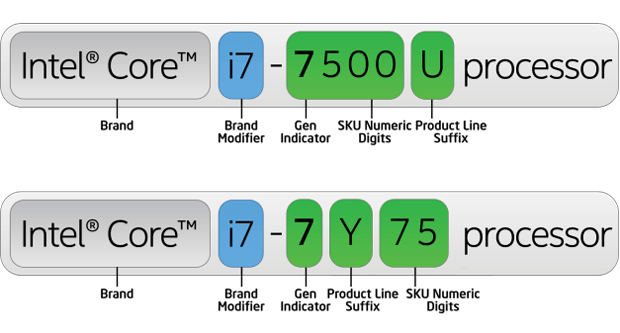There isn’t a term you hear as much as the CPU if you’re new to computer technology. Sometimes this term is used interchangeably with other computer parts, such as the motherboard or even RAM.
When I was relatively new in this field, an analogy of RAM and CPU as the brain of the computer was quite common.
It was really confusing as I kept wondering was it RAM that functioned as the brain of the computer, or was it the CPU?
So I couldn’t wrap my head around what the CPU really is.
If you do not know exactly what it is, you’ve come to the right place. We will be covering everything that constitutes a laptop’s CPU, from definitions, history, descriptions and, the different models.

Table of Contents
What is the Laptop’s CPU?
The Central Processing Unit (CPU) is the most important part of your computer. Everything you do on your computer goes through it. The CPU consists of an electronic circuit that receives instructions, decodes these instructions, and executes them. The CPU performs the following operations: arithmetic (mathematical operations), controlling, logic and, input/output. A CPU has the following primary components:
- An Arithmetic Logic Unit that is responsible for performing arithmetic and logic operations.
- Processor registers that deliver objects for the mathematical operation to the ALU and store the results.
- And a controlling unit for executing functions.
A laptop’s CPU is plugged into the motherboard, sometimes close to the cooling fan, depending on the manufacturer—the CPU functions at a very high speed. The heat generated depends on the task it is performing. This is why a cooling fan is needed.
The fans are connected to the CPU through heat pipes. Desktop CPUs are upgradable, meaning you can swap your CPU for another one without affecting your PC’s functioning. Laptop CPUs are permanently connected to the motherboard; swapping them is not possible in most cases. A CPU and Processor mean the same thing, so I will be using them interchangeably.
History of Processor
Let’s leave the technical stuff behind for a bit and delve into a bit of history. Eckert–Mauchly Computer Corporation, which built the first computer – ENIAC, did not use the CPU until 1955. ENIAC’s CPU was slow and could only perform 5000 functions per minute. These CPUs were built out of fragile parts such as relays and vacuum tubes. The computer had to be re-wired to perform different functions. Fast-forward to the 1960s, when ideas of packing thousands of semiconductor transistors into a single chip to form the integrated circuit laid the foundation for modern-day CPUs.
Using transistor technology, IBM introduced a system (S/360) that rendered different computers capable of running similar programs at varying speeds. As a result, transistor CPUs became popular during this period. These CPUs could operate at clock speeds of tens of megahertz.
IBM pioneered the release of small and large-scale integrated CPUs until the 70s where microprocessor technology took over. In 1971, Intel commercially released the first-ever microprocessor-based CPU, the Intel 4004 CPU with 2300 transistors. This CPU retained the designs of previous versions while adding microprocessors. The same goes for the latest CPUs, whether from Intel or AMD.

Laptop CPU vs Desktop CPU
The principal design between a laptop and desktop CPU is virtually identical. Differences come in how the manufacturers have designed them to function. If you compare two CPUs of the same, Intel’s Corei5 for laptop and one for the desktop, the desktop version will be more powerful than the laptop version. I’ll tell you why.

A laptop’s CPU has been designed to use the least power possible, especially when drawing power from the battery. Therefore, it will switch between drawing a lot of power and less power depending on the performance demands.
A desktop’s CPU, on the other hand, constantly draws power from the AC (directly from the power socket). For this reason, a desktop CPU is located right beneath the cooling fan since it generates heat faster. Therefore, it results in better cooling, which means you can give it more power.

A desktop’s CPU can be removed and replaced with another CPU. This is one of the features that allows you to custom-build your own PC. A laptop’s CPU is permanently attached to the motherboard. Laptop CPUs and desktop CPUs of the same make usually have a different number of cores. For example, a Desktop CPU with 4 cores corresponds to a laptop CPU with 2 cores accompanied with Hyper-Threading to make up for the core deficit.
In addition, desktop CPUs have higher clock speeds. For example, a desktop Corei5 has a 3.2GHz speed while the laptop version has a 1.8GHz speed with the possibility to boost to 2.4GHz. Laptop and Desktop CPUs are slightly different in terms of performance, but their structure is similar.
Identifying your CPU
We can’t describe CPUs without first identifying the two major companies that manufacture them: Intel and AMD. Despite AMD being founded just a year after Intel, Intel dominated the market for the better part of the decade from 2001 to 2010. However, as of 2010, AMD has also manufactured groundbreaking CPUs, which have given Intel serious competition.
Intel CPUs
Brand

The Intel brand has several economic product lines, which are: Core, Celeron, Pentium and, Xeon. The Intel Core is the most common line with a combination of numbers and letters added to it to identify the generation, a number of cores, whether it is overclockable or not, etc. So let’s break them down.
CPU Family
You have probably seen a sticker at the bottom right of your laptop on your Intel laptop showing a Corei3, i5, i7, or i9, but do you really know what this means. To put it simply, these numbers denote the number of cores present on the processor. This does not mean that Corei3 has 3 cores while i5 has 5 cores. In fact, there are only 2 cores in i3 and 4 cores in both i5 and 7. Corei9 has the highest number of cores – 8. The higher the number, the better performance. Corei7 will perform better than i5 despite having the same cores because of hyper-threading technology (we’ll get into this later).

Generation
Intel uses a combination of numbers and letters to identify its processors further. You might have come across core i5 9600K and wondered what these numbers and letters mean. Intel has 1st generation processors to 11th, which are yet to be released. Here is a list of these generations and their specific details.

The first number after core i5, in this case, denotes the generation of the processors being used. So if your CPU is identified as core i5 9600K, it uses 9th generation processors. Core i7 10710U uses 10th generation processors, and you can actually see the pattern here. Each new generation processor comes with a performance improvement over the previous.
| Generation | Year | Code name (Desktop) | Code name (Mobile) |
|---|---|---|---|
| 5th | 2015 | Broadwell | Broadwell |
| 6th | 2016 | Skylake | Skylake |
| 7th | 2017 | Kaby Lake | Kaby Lake |
| 8th | 2018 | Coffee Lake | Kaby Lake Refresh |
| 9th | 2019 | Coffee Lake Refresh | Coffee Lake |
| 10th | 2020 | Comet Lake | Ice Lake |
| 11th | 2021 | Rocket Lake | Tiger Lake |
Model Number
The last two numbers before the letter at the end represent the model number. For example, in core i5 9600K, 00 is the model number. Each preceding model has a performance improvement over the previous one.
Code Number and Letters
Intel assigns different code numbers to CPUs with the same core and generation processors to indicate a performance improvement. These improvements are not as significant as the differences in the number of cores or generations. Instead, they reflect a difference in clock speeds. For example, a core i5 8600 has a +0.3 GHz clock speed over a core i5 8400. Therefore, 6 and 4 represent the CPU’s performance levels.
Now let’s get to the letters after the numbers. What does the K in core i5 9600K stand for or the U in core i7 10710U? Before we get into this, some Intel chips come without the letter at the end. These are the base chips, the original.
Processors with K have the highest clock speeds hence the fastest. The K also indicates that they are unlocked for overclocking. Intel uses G to indicate processors that have an inbuilt graphics processor. These processors can run games and other high-end programs without requiring an external graphics card installed. Finally, T and U indicate those processors that use low power, with U using even less power.
| Suffix | Meaning |
|---|---|
| G1-G7 | Graphics level (processors with new integrated graphics technology only) |
| E | Embedded |
| F | Requires discrete graphics |
| G | Includes discrete graphics on package |
| H | High performance optimized for mobile |
| HK | High performance optimized for mobile, unlocked |
| HQ | High performance optimized for mobile, quad core |
| K | Unlocked |
| S | Special edition |
| T | Power-optimized lifestyle |
| U | Mobile power efficient |
| Y | Mobile extremely low power |
| X/XE | Unlocked, High End |
| B | Ball Grid Array (BGA) |
Technology
Core i3, i5, and i7 are equipped with Hyper-Threading technology. Hyper-Threading is a technology that makes the computer think that it has more cores than it actually has. Consequently, more than one thread can run on the same core and hence getting more work done. A single core works like two cores. Core i3 with only 2 cores, functions like four cores.
AMD CPUs

Just like Intel, AMD has its own brands. These are Ryzen, EPYC, Athlon, Phenom, FX, Opteron, and Sempron. Athlon PRO is made for businesses with a higher warranty and better security. EPYC CPUs are highly scalable, thus made for highly demanding workstations. Contrary to Intel’s Hyper-Threading technology, AMD utilizes Multi-threading to produce a higher number of cores. Ryzen Threadripper has as many as 64 cores, but this comes at the expense of the base clock speed (only 2.9 GHz).
AMD Ryzen Series
Let’s look at how AMD names their Ryzen series and what the characters mean. AMD’s Ryzen series is in line with Intel’s core series. AMD’s Ryzen series. Ryzen 3, 5, 7 and, 9 have 4, 6, 8 and, 16 cores respectively, as brand modifiers. Each new Ryzen chip has an improvement in performance over the previous one.
CPU Family
The CPU family number appears after the name AMD Ryzen. This number denotes the family to which the processor belongs. For example, in AMD Ryzen 5 3600X, the 5 represents the CPU family.
Generation
The first number after the model number represents the generation. AMD Ryzen 5 3600X is a 3rd generation CPU. The number that comes after (6) in this case indicates the CPU performance level.
Model Number
The 2 numbers that come after the performance level indicator represent the model number. It is also known as the SKU number.
Technology
AMD uses the following letters to represent different technologies incorporated into their laptop processors.
| Suffix | Meaning |
|---|---|
| X | Highest performance |
| XT | Boosted clock speed |
| G | with AMD Radeon Graphics |
| S | Low power consumption |
| H | High Performance |
| U | Standard |
Intel and AMD Processor Release Dates
| Intel Processors | Year | AMD Processors |
| 11th Gen Core i3 – i9 | 2021 | AMD Ryzen 9 5950X, AMD Ryzen 7 5800X, AMD Ryzen 5 5600X |
| 10th Gen Core i3 – i9 | 2020 | AMD Ryzen 3 4300U, AMD Ryzen 5 4600U, AMD Ryzen 7 4800H, AMD Ryzen 9 4900H |
| 9th Gen Core i3 – i9 and X- series | 2019 | AMD Ryzen 3 3100, AMD Ryzen 5 3550H, AMD Ryzen 7 3750H, AMD Ryzen 9 3900X, AMD Ryzen Threadripper 3970X |
| X-series, 9th Gen Core i9, i7, i5. 8th Gen Core i3 – i7 | 2018 | AMD Ryzen 3 2300U, AMD Ryzen 5 2500X, AMD Ryzen 7 2800H, AMD Ryzen Threadripper 2950X |
| 8th Gen Core i3 – i7, X-series, 7th Gen Core i3 – i7 | 2017 | AMD Ryzen 3 1200, AMD Ryzen 5 1500X, AMD Ryzen 7 1700X, AMD Ryzen Threadripper 1900X |
| X-series, 6th Gen Core i5, i7 | 2016 | A10-7860K, A6-7470K, and Athlon X4 845. |
| 4th Gen Core i3, 5th Core i5, i7 6th Gen Core i3 – i7 | 2015 | A10-7870K, Athlon X4 850, RO A10-8750B |
When you look up your processor on system information, you can understand what the characters stand for. That’s all for now. We hope you enjoyed reading this guide. Leave a comment below to inform us if this information was helpful to you.




Be the first to comment